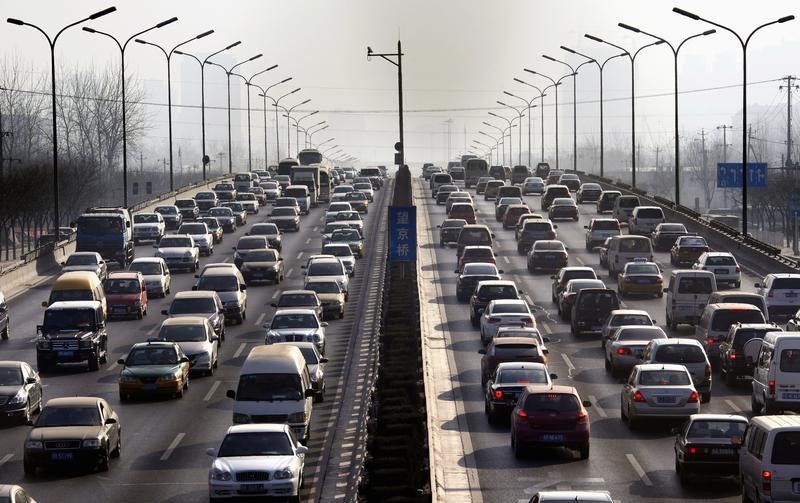(Bloomberg) -- China’s economy picked up speed in August as a strong industrial sector and stock market, better business confidence and home and car sales combined to boost the first economy globally to emerge from the Covid-19 slump.
That’s the assessment from the earliest available indicators, which showed China’s economy continuing to improve. The final result in July was also stronger than initially seen, given better results from purchasing manager indexes and more robust sales of homes and autos in the latter part of the month.
New home sales in China’s four biggest cities accelerated in the first three weeks of August, continuing July’s pickup. Car sales also are improving this month on the heels of July’s rebound as that market emerges from a two-year slump.
Still, even with better consumer confidence and spending, the broader retail sector remains sluggish. Without a strong rebound in dining out and shopping, retail is unlikely to return to strong growth.
More on Consumption
- Beach Holidays for Some in China, Belt Tightening for Others
- Chinese Buy Up Real Estate But Hold Off on Dining Out, Gambling
- China Car Recovery Gathers Pace With July Sales Accelerating
Conditions for small businesses continued improving in August, according to Standard Chartered (OTC:SCBFF) Plc, which surveys more than 500 smaller firms each month. Still, the improvement appears to be at a plateau, with the index for expectations dropping slightly.
“This suggests that the V-shaped post-Covid rebound may be nearing its limit, with growth approaching its potential level,” according to economists Shen Lan and Ding Shuang, who published the results. “SMEs’ new orders continued to increase in August, but that pace slowed for the first time since March.”
External conditions slowly improved as well. Average daily shipments from South Korea in the first 20 days of August fell 3.7%, significantly better than the double-digit declines seen in April through June. That suggests global trade is slowly gathering momentum.
South Korea’s exports serve as a barometer of global trade as its companies are closely linked to global manufacturing supply chains, and it releases data quickly.
China’s stocks have stalled since the the CSI 300 Index soared to a five-year high in mid-July. While still at a high level, the market is down 3% since that high amid tensions with the U.S. and as the People’s Bank of China moves to normalize monetary policy.
Early Indicators
From July, Bloomberg has changed some of the components for the early look at China’s economy, adding home sales in the biggest four cities, weekly car sales and inventories of steel reinforcing, while removing iron-ore prices, sales manager sentiment and property-related stocks.
Bloomberg Economics generates the overall activity reading by aggregating a three-month weighted average of the monthly changes of eight indicators, which are based on business surveys or market prices.
- Major onshore stocks - CSI 300 index of A-share stocks listed in Shanghai or Shenzhen (through market close on 25th of the month).
- Total floor area of home sales in China’s four Tier-1 cities (Beijing, Shanghai, Guangzhou and Shenzhen).
- Inventory of steel rebar, used for reinforcing in construction (in 10,000 metric tones). Falling inventory is a sign of rising demand.
- Copper prices - Spot price for refined copper in Shanghai market (yuan/metric tonne).
- South Korean exports - South Korean exports in the first 20 days of each month (year-on-year change).
- Factory inflation tracker - Bloomberg Economics created tracker for Chinese producer prices (year-on-year change).
- Small and medium-sized business confidence - Survey of companies conducted by Standard Chartered Plc.
- Passenger car sales - Monthly result calculated from the weekly average sales data released by the China Passenger Car Association.
©2020 Bloomberg L.P.
